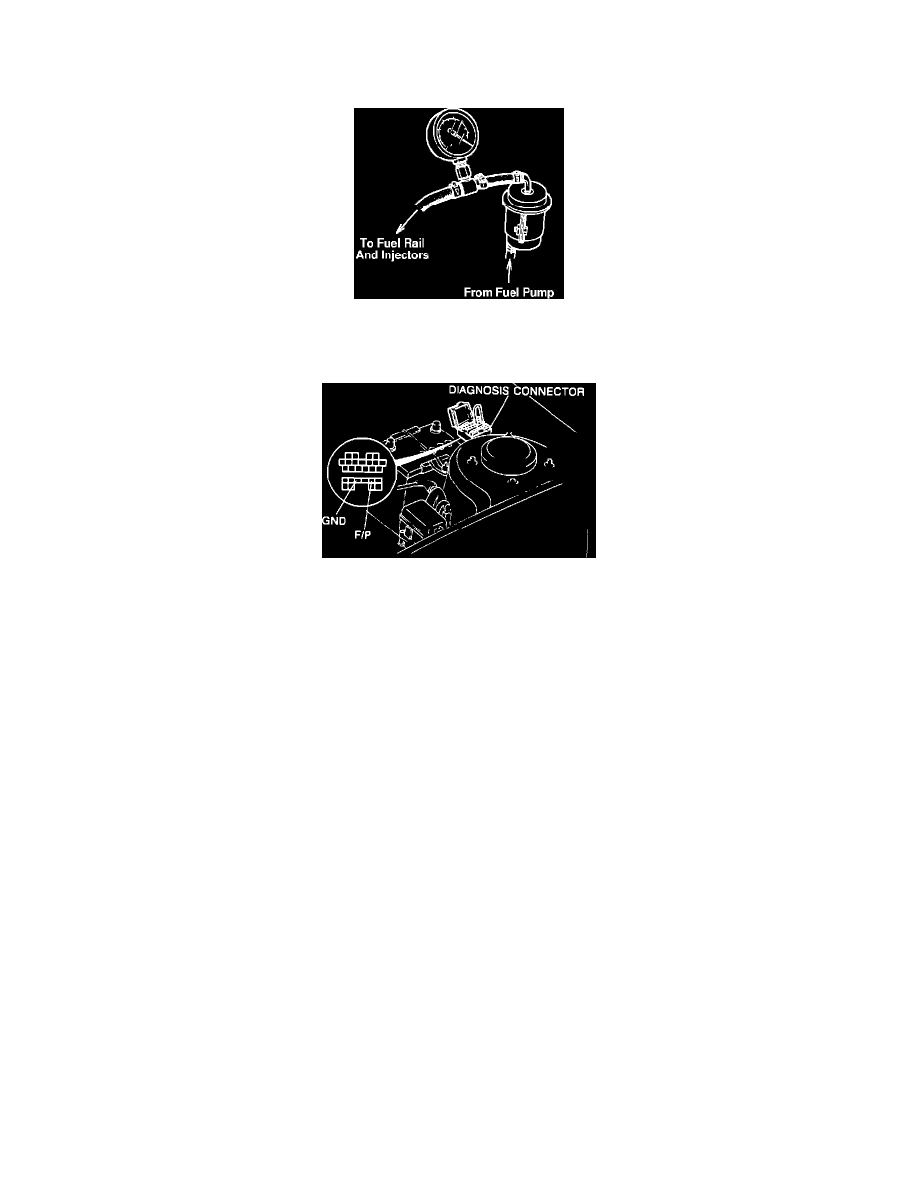323 L4-1800cc 1.8L OHC (1991)

Fuel Pressure: Testing and Inspection
1.
Relieve fuel system pressure by starting engine with fuel pump relay (circuit open relay) disconnected and let run until engine dies, then slowly
and carefully remove hose on outlet side of fuel filter. Cover with a clean rag while removing hose, to avoid spraying fuel in your face.
Checking Fuel System Pressure
2.
Using an extra piece of fuel injection hose, connect fuel pressure gauge as shown in illustration.
Energizing Fuel Pump At Diagnostic Connector
3.
Energize fuel pump by bridging the "Fp" and "GND" terminals of the diagnostic test connector (see illustration) and turning ignition "ON" .
4.
Pinch off hose between gauge and pulsation damper with a clamp.
5.
Observe fuel pressure on gauge (this will be the maximum fuel pressure available from the fuel pump).
64 - 85 psi (441 - 589 kPa)
If pressure is higher than the maximum specified, replace fuel pump. If pressure is lower than the minimum specified, check fuel filter. If filter is
OK, replace pump.
6.
Remove pinch clamp from hose between gauge and pulsation damper.
7.
Start engine and let idle.
8.
Observe fuel pressure on gauge (this is the system operating pressure).
30 - 37 psi (206 - 255 kPa)
If pressure is higher than the maximum specified, check fuel return line for kinks or restriction. If pressure is lower than the minimum specified,
check fuel filter. If filter and return line are OK and pressure is still not within the specified range, replace pressure regulator.
9.
Disconnect vacuum hose from fuel pressure regulator with engine idling.
^
Fuel pressure should increase when vacuum hose is removed.
38 - 46 psi (265 - 314 kPa)
